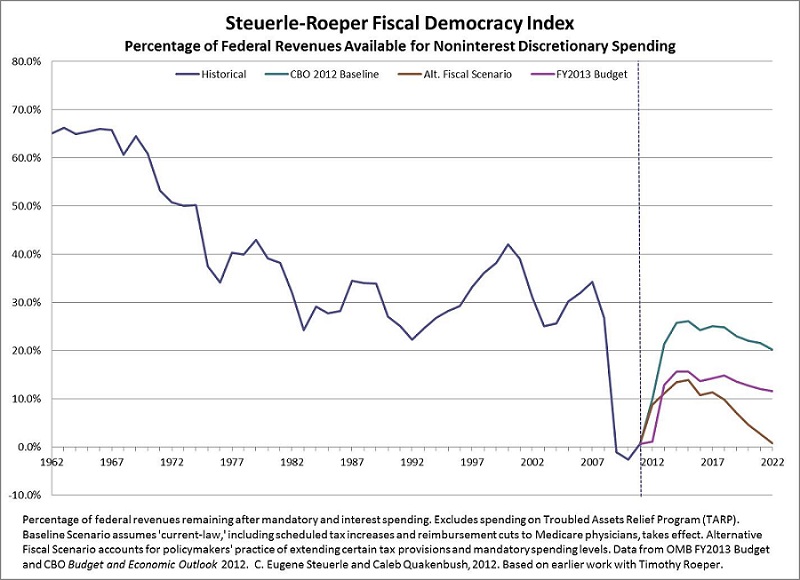It’s a continuing problem with students: they either believe the government can do a lot more than it does, or they believe that it does too many things.
Neither is true … and those beliefs are shockingly “old school” for college students who pride themselves on bringing a breath of fresh air to stodgy adults.
In the U.S., and generally in developed countries, governments have evolved (mostly over the last 50 years) from institutions that have free cash flow to spend on desirable projects (or alternatively, to return to taxpayers), into institutions in which spending and spending increases are on “autopilot”, and consequently no longer under the control of legislative bodies.
Don’t believe me? Here’s a chart of the Fiscal Democracy Index:

This shows the percentage of federal government spending which is discretionary: that members of Congress can actually control with their votes.
Most interestingly for students in conservative Utah, this is a metric developed at The Urban Institute. That’s a think tank that’s generally regarded as left of the center of the Democratic party. And they have developed a metric of how strictly the hands are tied of people who might actually approve progressive spending ideas.
And this is going to get worse. The real problem is Medicare (the one that pays for the care of seniors), and not Social Security (or disability), Medicaid (the poor), unemployment benefits, corporate welfare, defense spending, or foreign aid. The problem with Medicare is that it’s an open-ended promise to pay for medical care. But, because medical care extends life, it also extends payments.
No comments:
Post a Comment